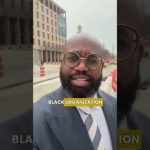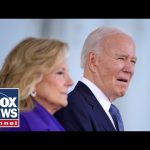The ongoing debate surrounding the assassination of President John F. Kennedy has taken a dramatic turn, as Congresswoman Anna Paulina Luna (R-Fla.) alleges the existence of a hidden video that could challenge the long-accepted narrative of the event. Luna claims that NBC has withheld footage showing Lee Harvey Oswald near Kennedy’s vehicle at the time of the shooting, a revelation that, if true, could undermine the conclusion of the Warren Commission that Oswald acted alone. This development has reignited public interest in one of America’s most controversial historical events and raised questions about media transparency and government accountability.
Luna, who chairs the House Task Force on the Declassification of Federal Secrets, has vowed to pursue the release of this alleged tape. She argues that withholding such evidence only deepens public mistrust in both media institutions and government agencies. Her efforts align with broader Republican initiatives to expose what they see as decades of federal “stonewalling” on key issues, including the Kennedy assassination. The congresswoman’s call for transparency echoes sentiments expressed by former President Donald Trump, who ordered the release of thousands of pages of JFK-related documents during his administration—a move celebrated by many as a step toward restoring trust in government.
Adding fuel to the fire is filmmaker Oliver Stone, whose 1991 movie JFK popularized conspiracy theories about Kennedy’s death. Stone testified before Congress this week, claiming he had seen a secondhand version of the NBC tape and urging lawmakers to subpoena it. He criticized past delays in declassifying records, arguing that they have obscured the truth for generations. While Stone’s credibility has been questioned due to his reliance on speculative theories, his testimony underscores a growing demand for a comprehensive reevaluation of the evidence surrounding Kennedy’s assassination.
Critics, however, remain skeptical. Some historians and experts argue that much of what Luna and Stone are pushing lacks substantive proof and risks sensationalizing an already complex historical event. They point out that recent declassifications have not produced any groundbreaking revelations undermining the lone gunman theory. Nevertheless, public opinion remains divided; polls consistently show that a majority of Americans believe there was more to Kennedy’s assassination than officially acknowledged.
This controversy highlights deeper cultural and political divides in America. For many conservatives, uncovering potential cover-ups is not just about solving historical mysteries but about holding powerful institutions accountable. Whether or not this alleged tape exists or proves significant, Luna’s efforts reflect a broader push to challenge entrenched narratives and demand transparency from both government agencies and media conglomerates. As calls for NBC to release the footage grow louder, one thing is certain: Americans are far from ready to close the book on this chapter of their history.




